COMPRAIL 2012
13th International Conference on Design and Operation in Railway Engineering 2012
11 - 13 September 2012
New Forest, UK
Overview
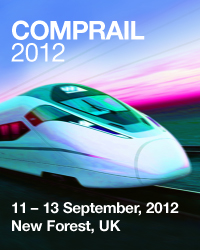
The 13th International Conference on Design and Operation in Railway Engineering (COMPRAIL 2012) has been held in the New Forest, home of the Wessex Institute of Technology (WIT).
The Conference was chaired by Prof Carlos Brebbia, Director of WIT, Prof Norio Tomii of Chiba Institute of Technology, Japan, Prof Bin Ning of Beijing Jiaotong University, China, Prof Ryo Tagaki from Kogakuin University in Japan, Prof Panos Tzieropoulos of the Ecole Polytechnique Federale de Lausanne, Switzerland and Dr J M Mera of the Railway Technology Research Centre, in Spain.
The aim of the conference is to review the latest developments in railway engineering and update the use of advanced systems, promoting general awareness throughout the business management, design, manufacture and operation of railways.
The Conference attracted a variety of specialists interested in the development of railways, including managers, consultants, railway engineers, designers of advanced train control systems and computer specialists. Particular emphasis was given to topics of current interest such as safety and security and energy supply and consumption; indicating the commitment of the industry to resolve some of the urgent problems facing society today.
COMPRAIL 2012 is the latest in a series of very successful meetings which started in Frankfurt in 1987 and continued in Rome (1990), Washington (1992), Madrid (1994), Berlin (1996), Lisbon (1998), Bologna (2000), Lemnos (2002), Dresden (2004), Prague (2006), Toledo (2008), and Beijing (2010).
Opening Address
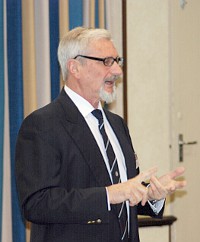
WIT’s own research focuses on the development of computational methods and the application to a wide variety of engineering and scientific problems. The Institute is recognised around the world as the originator of the Boundary Element Methods. The technique has numerous applications, including in biomedicine, offshore, naval and aerospace engineering etc. The Industrial Research Division of WIT supports a growing number of major companies around the world. Because of this, the Ashurst Lodge group has its own office in Boston, Massachusetts which actively supports the USA industry and military.
WIT Press, Carlos explained, is the publishing arm of the Institute. It publishes 25 or so conference books per year which are widely distributed in hard cover as well as digital format. These books are part of the renowned Transactions of Wessex Institute which contain all papers presented at WIT conferences since 1993 (see http://library.witpress.com/).
Carlos expects the number of books, other than those originating from conferences, to grow significantly in the next three years. In the regard, WIT Press welcome any suggestions to publish monographs or edited books in the field of Railway Engineering.
Wessex Institute of Technology is located in the New Forest National Park, an area of outstanding natural beauty. The Institute started on the grounds of a manor house and since then has expanded to include first-class accommodation for researchers and families. The aim is to continue improving those facilities – Carlos said – to enhance the quality of life and research at WIT. The latest development has been the construction of a sports building, containing an indoor swimming pool open to all researchers, staff and residents. Forthcoming plans are for improvements to the grounds and building new conference room facilities. Slowly but steadily the WIT Campus has continued to grow.
Invited Papers
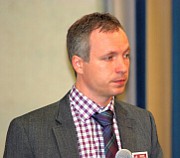
‘From single to double track. Effects of alternative extension measures’
by Olov Lindfeldt, Royal Institute of Technology, Sweden
‘Network Effects in Railways’
by Alex Landex, Technical University of Denmark
‘Newly developed simple railway timetable evaluation program Sujic with the new model to deal with re-scheduling’
by Ryo Takagi, Kogakuin University, Japan
‘Managing operations in real-time’
by Joao Martins, SISCOG and Technical University of Lisbon, Portugal
‘Emergency management of urban rail transit systems using parallel control’
by Bin Ning of Beijing Jioatong University, China
Conference Topics
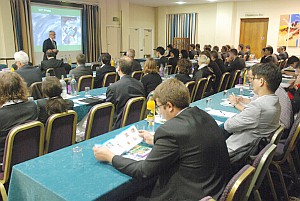
- Advanced train controls
- Communications and signalling
- Computer techniques and simulations
- Planning
- Monitoring and maintenance
- Operations quality
- Timetable planning
- Rescheduling
- Energy supply and consumption
- Risk management
- Safety and security
- Dynamics
Social Events & Excursion
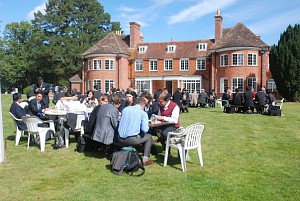
The BBQ held in the gardens of the Institute consisted of a whole roasted lamb accompanied by a series of side dishes and desserts. The delegates had the occasion to appreciate WIT’s facilities and in particular the new sports building. The event gave them the opportunity to establish better contacts with each other in a relaxed environment.
The Ashurst Lodge grounds of Wessex Institute are thought to have been inhabited from prehistoric times due to the excellent position on high ground and near a stream. The site of a saltpetre works is associated with the origin of the Lodge as it is now. They were set up by a colourful entrepreneur called Cornelius Stephinson, a native of Liège who, in the 1560s took refuge in England, as did many of his Protestant fellow citizens. Cornelius had the expertise required to produce a series of chemical compounds, in particular saltpetre which, together with sulphur and coal, is one of the ingredients of gunpowder, of great strategic value during the reign of Elizabeth I.
Cornelius was given a concession to collect nitrate-rich soils in the neighbourhood and the fuel needed from the Forest. The products of his saltpetre works are still clearly visible halfway between the main road and the entrance to the Lodge. The dwelling house of Cornelius stood in what are now the grounds of Ashurst Lodge, probably in the same position as the central core of the present day main WIT building.
In spite of his expertise, Cornelius was unable to produce saltpetre in sufficient large quantities and the resulting financial problems forced him to abandon the Ashurst works.
From then on a series of Forest Keepers and other officials took up residence in the Lodge up to 1919, many of them renowned through the New Forest history. It ended by becoming the residence of the Assistant Deputy Surveyor of the Forest, a very important position in spite of this title, as he was in charge of running the whole of the New Forest.
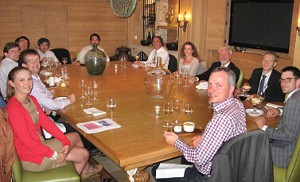
It was in 1982 that the Computational Mechanical Institute group of companies moved into the Lodge and in 1986 WIT was created as a result. The Lodge has grown considerably since then, offering accommodation for a substantial number of researchers and families in a unique environment.
The International Scientific Advisory Committee met over dinner in a newly renovated hotel, originally the property of the Queen Consort of Edward II, Queen Isabella, and which in 1331 became that of Queen Philippa, wife of Edward III. From then on the building was used for different purposes until it became a school ‘for gentlemen’ and eventually a hotel, which was the best hotel in the whole of the New Forest, highly regarded by the standards of its cuisine.
The ISAC members discussed the conference after dinner and in particular how to improve it when it is reconvened in 2014. Several new topics were proposed as well as nominations for the Committee.
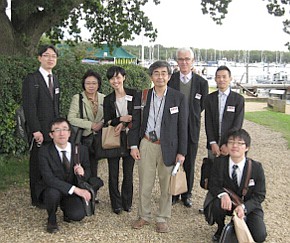
At its height there were five slipways and 20 workers’ cottages. Only two rows of cottages now remain. At the end of one now stands a hotel which was the Master Builder’s house, and one of the builder’s cottages is now a small chapel. An excellent museum at the entrance of the village describes the activities that took place.
Many fine wooden ships were built there, including the famous Agamemnon, commandeered by Nelson during the battle of Calvi. This ship, together with Swiftsure and Euryalus, all built at Bucklers Hard, took part in the battle of Trafalgar.
The delegates visited the Museum and had a light lunch. They returned to the conference after enjoying the sights and a short walk around the old buildings.
Conference Dinner
The Conference dinner took place in another unique setting in the New Forest, located along the coast and called Highcliffe Castle. The property, recently restored, was the home of the Stuart family, renowned for many accomplishments. Lady Mary Wortley Montagu, for instance, married into the family and was the first to introduce the Turkish practice of inoculation against smallpox in England, trying the technique on her own children, many years before Edward Jenner perfected it. Another Stuart served with distinction in the Army and the diplomatic service.
Highcliffe Castle was lavishly decorated over the years but sadly some of the most precious pieces were sold and are now spread all over the world, including some in New York Metropolitan Museum. The family died without succession and the house deteriorated over the years, becoming first a Catholic Seminary. Following the priests departure the house fell into disrepair. It has only been recently that it has been renovated with great care and dedication by local volunteers.
The banquet took place in the main hall of the house with good food, accompanied by excellent wines. At the end of the meal Carlos thanked the delegates for having attended the event and referred to the nice atmosphere generated by the conference.
Conference Proceedings
The proceedings of COMPRAIL, 780pp (Print ISBN: 978-1-84564-580-9, eISBN 978-1-84564-581-6) are available from WIT Press. Orders can be placed on the WIT Press web site at www.witpress.com or by email: This email address is being protected from spambots. You need JavaScript enabled to view it., telephone: +44 (0) 238 029 3223 or fax: +44 (0) 238 029 2853.
Papers from the conference will also be hosted online at the WIT eLibrary as Volume 127 of WIT Transactions on the Built Environment (ISSN: 1746-4498, Digital ISSN 1743-3509). For more details visit the WIT eLibrary at http://library.witpress.comClosing of the Conference
The next conference will take place in 2014 in Rome, Italy from 22nd - 24th June.
Related Conferences: Urban Transport 2013, Kos, Greece from 29-31 May, 2013 (see, http://www.wessex.ac.uk/13-conferences/urban-transport-2013.html).


 Wessex Institute
Wessex Institute